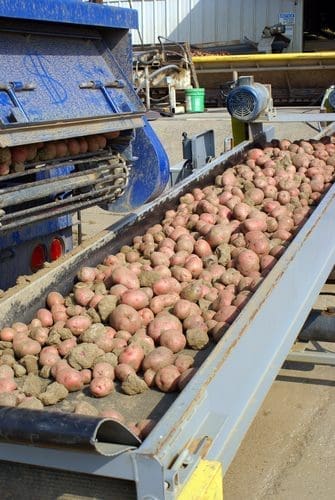Weigh belt feeders ensure operations are mixing and measuring the appropriate amount of materials. However, not every feeder is the same. Some are better suited for grain milling while others complement plaster board production.
Many plant managers, no matter which industry they're working in, want feeders with high accuracy and precision. While this feature is applicable to the majority of operations, there are three factors procurement officers should take into account before buying belt feeders:
1. Volumetric or gravimetric?
There are two types of feeders: volumetric and gravimetric. Volumetric feeders control how much material passes onto a conveyor belt or other processing asset by measuring product volume. These instruments are configured to distribute a certain volume of material over specific time frames. For example, you could program a feeder to distribute 1.2 cubic metres of material per second.
In contrast, gravimetric feeders use scales because they dictate material flow based on product weight. These instruments are more accurate than their volumetric counterparts, and are usually preferred when material density is erratic.
2. Material flow characteristics
Your choice between gravimetric and volumetric feeders will partly depend on how the product you manage flows. Schenck, which develops some of the feeders we commission, install and repair, identified a few examples of flow properties:
- Free-flowing material requires no aids or application-specific devices to travel adequately.
- Fibrous products such as biomass fibres and wood flour are characterised by lengthy particles which can tangle together and disrupt flow.
- Hygroscopic materials like salt and sugar absorbs moisture quite easily, which can lead to clumping. In addition, when left overnight, hygroscopic products can harden, causing irritating plant disruptions.
It may be wise to consult industrial instrumentation professionals to help you analyse material flow, which will ultimately help you select the most appropriate weigh feeder.
3. Vibratory components
Depending on material flow characteristics, it's possible you'll need a feeder with vibratory attachments. Schenck detailed these assets as discharge tubes that impact the volumetric throughput. These are generally inexpensive to install, don't consume a lot of energy and have a limited number of moving parts.
One of the disadvantages with vibratory feeders is that fibrous materials and adhesives may build up on the feeder tray. This could cause frequent disruptions, as personnel will likely have to clean the feeder more often than usual.
If you'd like to learn more about which features you should look for in a weigh belt feeder, contact the team at SRO Technology.



Recent Comments